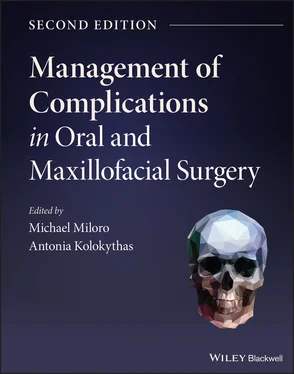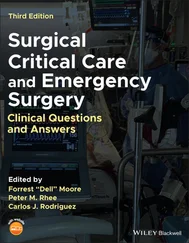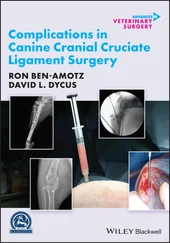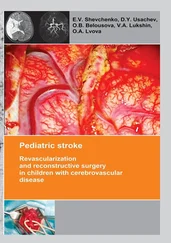1 ...7 8 9 11 12 13 ...40 A review of systems can ascertain whether a patient has any undiagnosed medical conditions that could impact the planned anesthetic procedure. In particular, questions designed to elicit underlying respiratory, neurological, or cardiac disease are especially important. A history of snoring, allergic rhinitis, wheezing, shortness of breath (exertional or spontaneous), and recent upper or lower respiratory infections can provide important information about the possible risk of respiratory complications. Certain medical conditions and risk factors to look for include history of asthma, chronic obstructive pulmonary disease (COPD), and tobacco use. Chung et al. identified asthma with a fivefold increase in respiratory complications during ambulatory anesthesia, and tobacco smoking carries an increased fourfold risk [4]. Also, the use of marijuana may alter/increase the tolerance to some anesthetic agents. Patients with COPD have twice the risk of respiratory complications during ambulatory anesthesia [10]. Ascertaining a patient's exercise tolerance can provide a great deal of information as well, including signs and symptoms of respiratory or cardiac disease, as well as musculoskeletal complaints or any limitations in range of motion. In patients who do not engage in regular exercise, one can substitute questions about activities of daily living such as walking several blocks, climbing more than one flight of stairs, grocery shopping, doing several loads of laundry, or performing vigorous housework.
It can be helpful to obtain a family history, particularly from patients who are young or present with few medical history findings, especially to ascertain whether an immediate family has ever had an adverse event related to anesthesia, an unusual genetic illness, congenital heart defect, or premature or sudden unexpected death. Inquiry about a history of tobacco, alcohol, and illicit drug use is important. In a patient who drinks alcohol regularly, asking about usual intake amount and typical effects (e.g., drowsiness, “tipsiness”) can sometimes provide a rough indication of response to anesthesia. Vital signs should be recorded for every patient prior to the day of the planned procedure as they are helpful for establishing a particular patient's baseline. For example, this may help to differentiate a patient who, on the day of surgery, develops hypertension as a result of anxiety, from a patient whose baseline blood pressure is usually elevated and is a risk for anesthesia that is discovered only on the day of the planned surgery with the need to delay surgery and obtain medical consultation.
The history and physical examination provide the basis for deciding whether a patient will need further testing or evaluation prior to the anticipated anesthetic. Further evaluation can take many forms, including laboratory testing, ECG/chest radiography, or consultation with the patient's physician, including referral to specialists as needed. Patients who have a complex medical history with multiple chronic comorbid conditions, recent surgeries or hospitalizations, and multiple hospitalizations in the past year clearly warrant further evaluation. These types of patients are obviously at higher risk and may or may not represent suitable candidates for outpatient anesthetic procedures. Of more concern, however, may be those patients whose risk for outpatient anesthesia is unclear or unknown. In this case, the role of laboratory testing and other investigations is to clarify whether the patient may be safely sedated in an outpatient setting. Patients who give an unclear or ambiguous medical history obviously fall into this category, as do patients with several positive findings in the review of systems or patients with chronic medical conditions that appear to be poorly controlled. In addition, one should approach cautiously patients who report no medical problems and who have not had a routine medical examination within the past three years or longer, particularly if they are middle‐aged or older, or have other obvious medical risk factors. Patients such as these may have undiagnosed medical conditions that could greatly impact the safety of the planned outpatient procedure.
A diversity of laboratory tests may be ordered for a patient, but for routine use, few to none may be necessary. Recent scientific research suggests that routine presurgical laboratory testing is overused and not useful. There may be no association with postoperative outcomes [11]. A complete blood count (CBC) and basic metabolic panel (BMP) represent two of the most common basic laboratory testing profiles used. The CBC can provide information about the presence of infection or inflammation (elevated white blood cell count), the relative proportions of blood cells, the presence of anemia (hemoglobin and hematocrit), and blood type (red blood cell size and morphology), and verify an adequate number of platelets for hemostasis. The CBC does not provide information about platelet function or the clotting ability of blood for which a partial thromboplastin time and prothrombin time (commonly reported as an international normalized ratio) are needed. Information about platelet function can be obtained from platelet function testing, of which several different tests are available. The BMP will provide information about electrolyte and acid/base balance as well as renal function (blood urea nitrogen and creatinine levels), and may be substituted by a complete metabolic panel that also includes markers of liver function (typically, aspartate and alanine transaminase liver enzyme levels). Markers of renal and liver function may be considered for patients with diabetes, liver, or kidney disease as they can indicate the progression of disease as well as the potential need for modification of anesthetic drug dosages. In women of reproductive age, some practitioners will also order a beta‐human chorionic gonadotropin test (β‐HcG) to verify a patient's pregnancy status. A serum β‐HcG is more sensitive, but urine β‐HcG tests are less expensive and easy to administer. The current ASA recommendation is to offer a pregnancy test to women of child‐bearing age when the result would alter the patient's management. The highest risk procedures are those that directly affect the reproductive organs or include exposure to known teratogens. The safety of common anesthetic agents on a developing fetus is unverified at this time [12]. Laboratory tests performed within the preceding 30 days are generally considered recent enough and do not necessarily need to be repeated. Patients with more rapidly changing conditions, such as patients taking warfarin, will need more recent laboratory tests. β‐HCG tests, if indicated, are ideally performed within one week of the scheduled anesthetic procedure.
Special considerations exist for preoperative screening of patients with known or suspected cardiovascular disease. Cardiovascular disease is increasingly common and cardiovascular complications of anesthesia are among the most serious. Basic methods of screening for cardiovascular disease include the standard 12‐lead ECG and chest radiography. More advanced diagnostic methods include echocardiography and cardiac stress testing. Depending on the institution and surgeon preference, some OMSs routinely order ECGs and chest radiography for patients over a certain age. Sometimes this practice is restricted to patients who are scheduled for OR procedures and sometimes it extends to outpatient anesthetic procedures as well. For low‐risk procedures in ASA I (and most ASA II) patients for whom a detailed history and physical examination have been performed, an ECG and chest radiograph are largely unnecessary. Cardiac testing may be considered for patients with clinical risk factors for cardiac complications, as assessed by the American College of Cardiology and American Heart Association (ACC/AHA) in the 2014 Revised Cardiac Risk Index . These factors include a history of ischemic heart disease, compensated heart failure or prior heart failure, cerebrovascular disease, diabetes mellitus, or renal insufficiency [13]. Minor predictors of cardiac risk include being over 70 years of age, uncontrolled hypertension, abnormal ECG, and nonsinus rhythm, but these have not demonstrated utility as independent markers of cardiac risk during noncardiac surgery [14]. A patient's functional capacity as measured by “metabolic equivalents” (METs) is an important parameter assessed in the 2007 ACC/AHA guidelines on perioperative cardiovascular evaluation. Patients who have poor functional capacity (<4 METs) represent a greater risk of cardiac complications than those with adequate functional reserve. The 2014 ACC/AHA guidelines do not recommend 12‐lead ECG testing for asymptomatic patients for low‐risk surgery such as routine ambulatory dentoalveolar surgery. The guidelines were developed based on level of evidence from the scientific literature indicating a clinical advantage to preoperative intervention in various patient groups prior to noncardiac surgery.
Читать дальше












